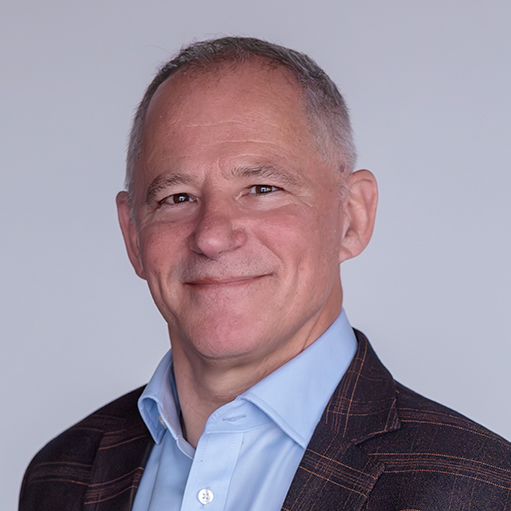Purpose-driven leadership is all the rage. B corp organizations are on the rise, declaring their commitment to the triple bottom line of profit, people and planet. Meanwhile, the ESG bandwagon continues to gather steam. PwC estimates that asset managers globally "are expected to increase their ESG-related assets under management (AuM) to US$33.9tn by 2026, from US$18.4tn in 2021."
On the surface, this is an uplifting shift in the focus of business life, a cause for optimism for anyone who believes leaders should pursue a higher purpose than money, status and self-indulgence. Dig deeper, though, and you may find that these positive trends put individual business leaders under intense pressure, challenging their resilience and creating new dilemmas in their daily lives.
Finding Resilience
As an executive coach working with CEOs across many sectors, I hear their candid thoughts and witness the emotional roller coaster of their stressful roles. In the pandemic-shifted world, I find the motivation and commitment of these leaders increasingly fragile as they grapple with the shift from a profit-driven to a purpose-driven landscape.
In the profit-driven world, business leaders were expected to care for results, results, results. Life was hard but relatively simple. In the purpose-driven world, business leaders are expected to care for an altruistic mission, their own well-being and the well-being of others—and still deliver the same results as before. Life is harder and far more complex.
In this environment, how can leaders thrive? How can they sustain their motivation, their authenticity and their resilience? Mastering the "Up," the "In" and the "Out" of purpose-driven leadership is the answer. Let’s define these three dimensions of purpose-driven leadership in more detail.
The 'Up': Pursuing A Higher Calling
In the purpose-driven business world, leaders pursue a "change the world" mission that goes beyond the goal of wealth creation. Purpose-driven leaders will be expected to shift from focusing on maximizing their own financial rewards to pursuing their higher calling. If there are no lucrative dividends from profits to look forward to, what motivates the purpose-driven leader to take the risk of starting their own venture? It can only be their higher calling. Similarly, only their higher calling will provide the necessary fuel for the demands of the purpose-driven executive journey.

How do leaders find that higher calling? One starting point is to explore the Japanese system of ikigai. When this philosophy is applied to business, it states that your highest calling will be found at the intersection of the following four questions:
• What do you love?
• What does the world need?
• What are you good at?
• What can you get paid for?
I coach many leaders to capture their ikigai and then to express it by setting courageous goals and key performance indicators (KPIs) for a personal triple bottom line of results, relationships and reputation.
The 'In': Living A Sustainable Life
In the purpose-driven business world, leaders create sustainable organizations that can succeed long-term without exploiting scarce resources in the short term. Similarly, purpose-driven leaders are expected to live sustainable lives. If purpose-driven leaders sacrifice their long-term needs for short-term success, they will be inauthentic and hypocritical.
What does it mean to live a sustainable life? It means looking after your environment and not exploiting your natural resources. Partly, your environment is the place you live, and partly, it is your own body. Just like the larger environment, you have resources of time and money and energy. The purpose-driven leader knows how to take care of these resources and safely steward their lives in a way that models for others how to maintain balance and health for the longer term.
The 'Out': Caring For Others
In my own experience of purpose-driven leadership, I have struggled to balance the need to drive the business hard while also showing appropriate care and kindness to team members who have worked through challenging times, including a global pandemic. My instinct, bred from many years leading in the profit-driven world, is to prioritize business needs when the chips are down. However, I know from my own research that benevolence, wishing well for others, is critical to building high-trust cultures.
In developing the "Out" of purpose-driven leadership, I have had to develop my patience, compassion and capacity to forgive. I have had to learn to transform the frustration I can feel when ambitious business goals are not achieved or when I feel my professional standards have been compromised. One technique that helps me with this challenge is learning to live with negative feelings rather than act on them. I have learned that suffering through a sleepless night is preferable to acting impulsively to discharge a negative feeling by dumping it on someone else.
Redesigning Around Purpose
Leaders who pursue the "Up," the "In" and the "Out" of purpose-driven leadership will thrive in this new age. In 2014, author Aaron Hurst wrote in his book The Purpose Economy that "the companies emerging as leaders in the new economy are truly redesigning every aspect of their business around purpose." Similarly, in 2023, we need leaders to emerge in the new economy who are redesigning every aspect of their leadership around purpose.
I will further explore the "Up," the "In" and the "Out" of purpose-driven leadership in my new book, which will be published in 2024. In the meantime, I hope this article has given a glimpse of both the challenges and the possibilities that lie ahead for leaders who commit their businesses and themselves to be forces for good.





